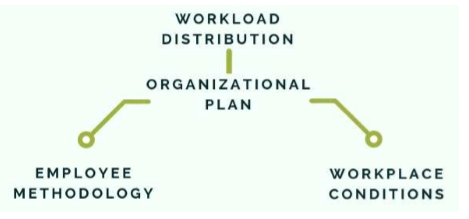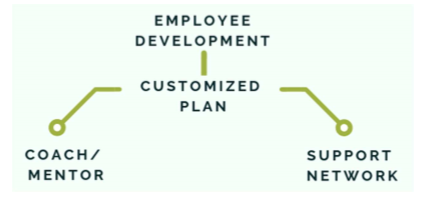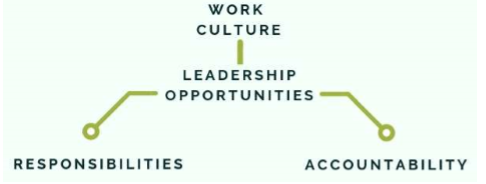Home › Jitsutech University › Thursday Thinktank › Technology is like Air Generation
-
AuthorPosts
-
September 18, 2018 at 5:54 am #1583
Anonymous
InactiveTechnology is like Air Generation
Move over millennials… you are no longer the newest members of the workforce. The current coming of age generation is, Gen Z, born in 1998 to date, which believes “Technology is like air” according to Tapscott in 2009. Gen Zs are digital natives and subsequently do not know a world without: Google, IPHONES, wiki, Facebook, snapchat, YouTube etc.
Tech is reshaping our workplace and Gen Zs are well versed in tech navigation. Gen Zs have the upper hand as they learned about digital footprint mishaps and consequences from millennials which predictably spilled into the workplace. The workplace, trying to keep up, has adapted to a new tech normal by gaining mobilization and transparency as we configure usage, privacy measures, expectations and human resource policies, such as morality clauses to reflect blending of information sharing, ownership, and availability. As organizational leaders, how can you incorporate Gen Z, with enhanced tech skill and proficiency, which is offset by no work experience into the workplace? Here are three tips in maximizing the value and successful unification of the newest workforce members.
Tip #1, in workload distribution, organizational leadership needs to plan clear direction supported by employee methodology and workplace conditions. As a first step on an organizational macro-level, leadership establishes a plan with priorities and objectives through evaluations to be distributed to employees. Precedingly, at the micro-level, leadership executes and communicates the organizational plan including: a fit of employees, tasks, job duties, and resource allocation incorporating fixed budgets and a timeline for accountability. During the plan execution, organizational leadership has opportunities to truly make or break a workplace experience especially for Gen Z employees. As there are many ways to travel down a road and get to the same destination therefore look to ignite your talent pool with “discoverable routes” or maximize their individual uniqueness.
A plan focused on this outcome has conclusive benefits for the organization to further tap into a broader range of talents and sustain the current workforce. Organizational plan cornerstones of support combine: employee methodology and work conditions. Employee methodology outlines whether targets are best achieved through a process of individual work or small teams. Look to put Gen Z in small teams as they can offer their highly acute tech skill while gaining work experience from others. Organizational leadership that utilizes a generous degree of flexibility towards employee methodology will see a direct correlation with improved productivity. In addition, employee workplace conditions have a direct impact on employee motivation. Organizational leadership should look to have a sizable bandwidth in allowances toward employee workplace conditions including: flex schedules, physical workspace design and environment, stress and noise level, and degree of safety. Allowing for a customizable workspace generally translates into a happier work culture that again leads to more productive employees. From a tech perspective, Gen Z is used to having multiple platforms or mediums such as music streaming and instant messages in a symmetrical system. This will likely change the current mold of the workspace.

Tip #2, in employee development, cultivate, support and invest in your talent through: planning, coaching and a support network. A customized training plan sets short and long-term goals with realistic targets while identifying motivators and opportunities. The fostering of a successful work relationship needs to be with someone who is an expert at leadership, mentoring, and/or coaching not just a subject matter expert (SME) or long-time employee who knows the organization or systems. Without the use of an expert trainer, there will likely be a disconnect with this type of employee which may materialize into a real threat in loss of potential talent. The Gen Z employee will likely become frustrated and look for another opportunity which they can easily find at their fingertips. Therefore, coaches should plan on consistent check-ins to establish an environment of trust and generate employee growth. Additionally, a community of online support would have a huge benefit. Gen Z is used to being connected and they want to be apart of the work culture even if it’s just an online platform. They are comfortable within this arena. Be aware the online platform does not replace but enhances their work support network with the right employee development plan and coaching.

Tip #3, in work culture, provide opportunities for responsibility and ownership of projects anchored by leadership, accountability, and responsibilities. Gen Z employees are new to the workforce however they have an expert level of shareable skills. These hard skills likely surpass those of many long-term and loyal employees. To really connect with Gen Zs, they have to feel valuable and vested into your organization. Leadership is a skill to be developed although it does require leadership opportunities to learn. By providing them with an opportunity to shine, the whole workforce will directly benefit. Accountability in a workforce is a new concept to new employees and so are the responsibilities. Therefore, they should be given in slow increments as the intention is not to overwhelm or undermine but build the best pathway to success for the organization and employees. The pulse of an organization relies on communication and established feed-back sources such as surveys for employees to have their voice. These measures ensure they have a venue to be heard and feel valued. Organizational leadership should plan to maintain a balance of employee job functions and responsibilities with a built-in two-way feedback communication loop. This is a win-win for employees and organizational long-term development as happy employees are likely to stay; increasing employee retention positively impacts organizational efficiency.

In summary, to achieve maximum productivity, organizations need to intentionally plan, blend, and develop this talent pool through work distribution, employee development, and workplace culture. The Gen Z employees have arrived as valuable workplace assets. In the ever-evolving tech era, organizational leaders who understand, appreciate, and weave in Gen Z’s value will be the most attractive and inviting to work for.
Focus Mentoring Group, CEO, Trish Mabe
Tapscott, Don. (2009) “Grown Up Digital.” New York, NY, USA.
-
AuthorPosts
- You must be logged in to reply to this topic.


